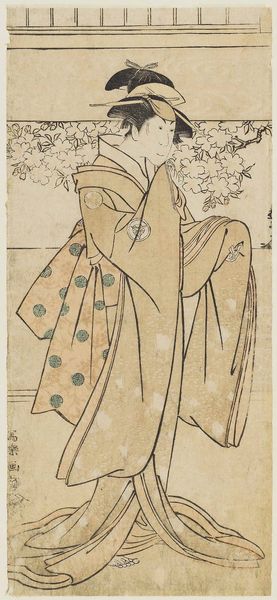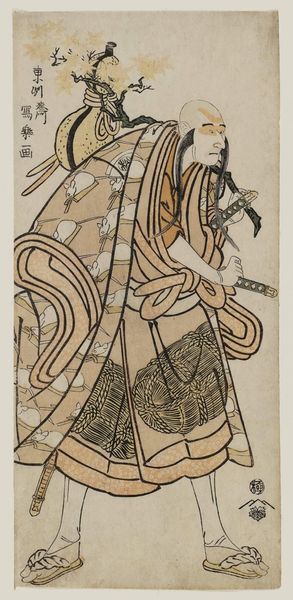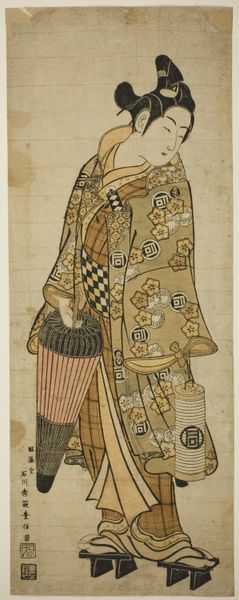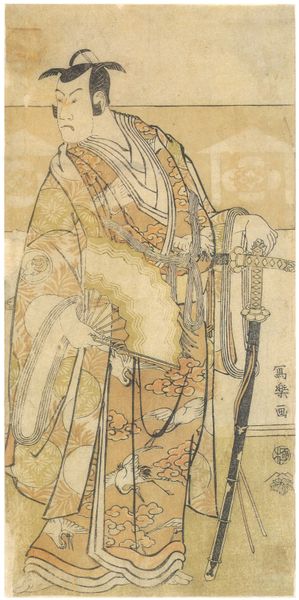
print, woodblock-print
#
portrait
#
ink painting
# print
#
asian-art
#
ukiyo-e
#
woodblock-print
#
genre-painting
#
watercolor
Copyright: Public Domain
Curator: Looking at Katsukawa Shuncho’s c. 1780-1801 woodblock print entitled "Playing Temari," I am immediately struck by its elegant simplicity. Editor: Yes, there's a graceful quality. It feels delicate, almost ephemeral. You can really see the hand of the maker through its linear form. The use of woodblock for prints highlights an accessibility to artmaking for marginalized creators. Curator: The work captures a moment of leisure, reflecting broader themes of female domesticity and entertainment within Ukiyo-e traditions. The women depicted playing a game of Temari are clearly coded through style and beauty conventions as members of a particular class. Editor: Class is essential here, because the temari ball itself signifies craft and domesticity and can indicate a sort of elevated production in design and making when one is a person of means. Did they dye the fabric? How long did it take to execute those intricate patterns? How were the makers valued? Curator: Exactly. Looking at how labor intersects with class reveals some important tensions. While we admire the artistry in the fabric, how can we interrogate the power structures implicit in representations of women as demure objects in a patriarchal context? How can we reimagine an aesthetics of resistance to patriarchal frameworks? Editor: Right! Material culture often reveals asymmetrical power dynamics inherent to their modes of production. We are viewing not just "entertainment", but highly coded messaging regarding production and consumption—even female artistry as itself a production. The woodblock, too—whose labor was valued in creating these scenes? Curator: Ultimately, in my mind this is precisely where the work is impactful, allowing the viewer to ponder larger, sometimes obscured networks of production, while reflecting on our own social context. Editor: I think, as a viewing audience, attending to process helps make visible the social, cultural, and even historical conditions that determine value systems regarding art, class, gender and production.
Comments
No comments
Be the first to comment and join the conversation on the ultimate creative platform.













